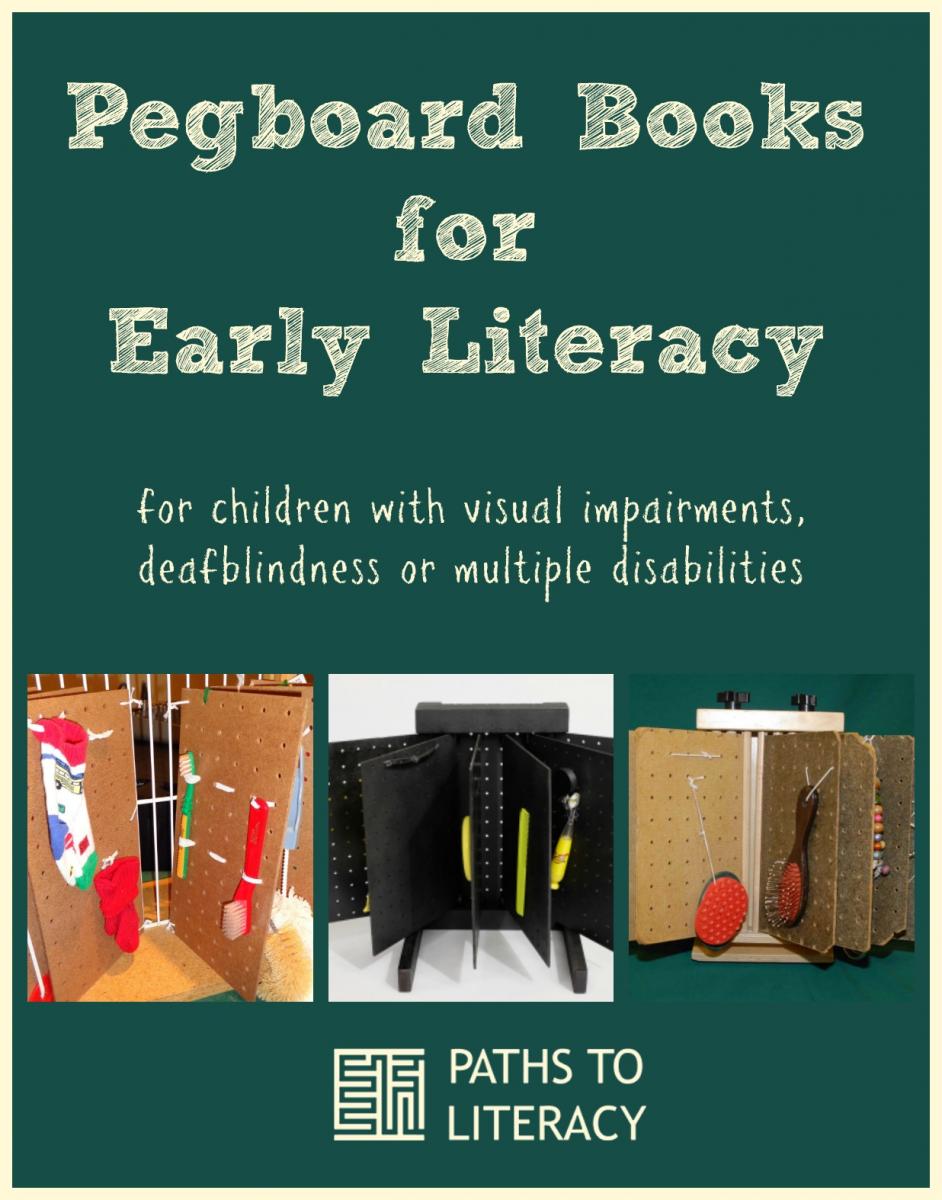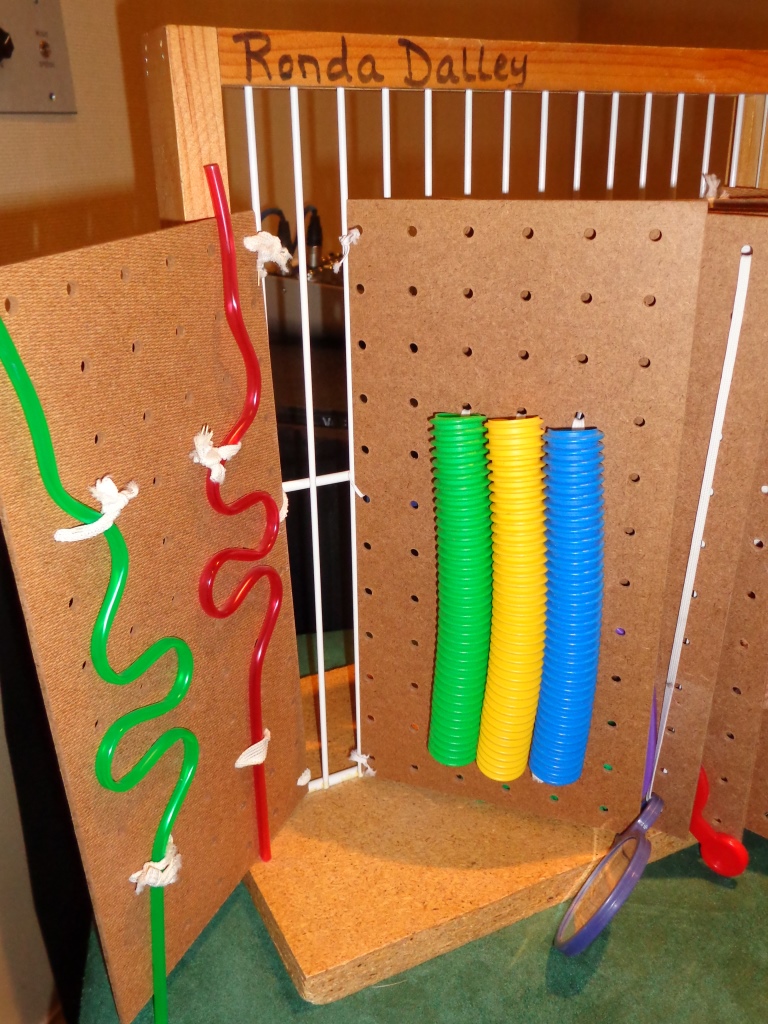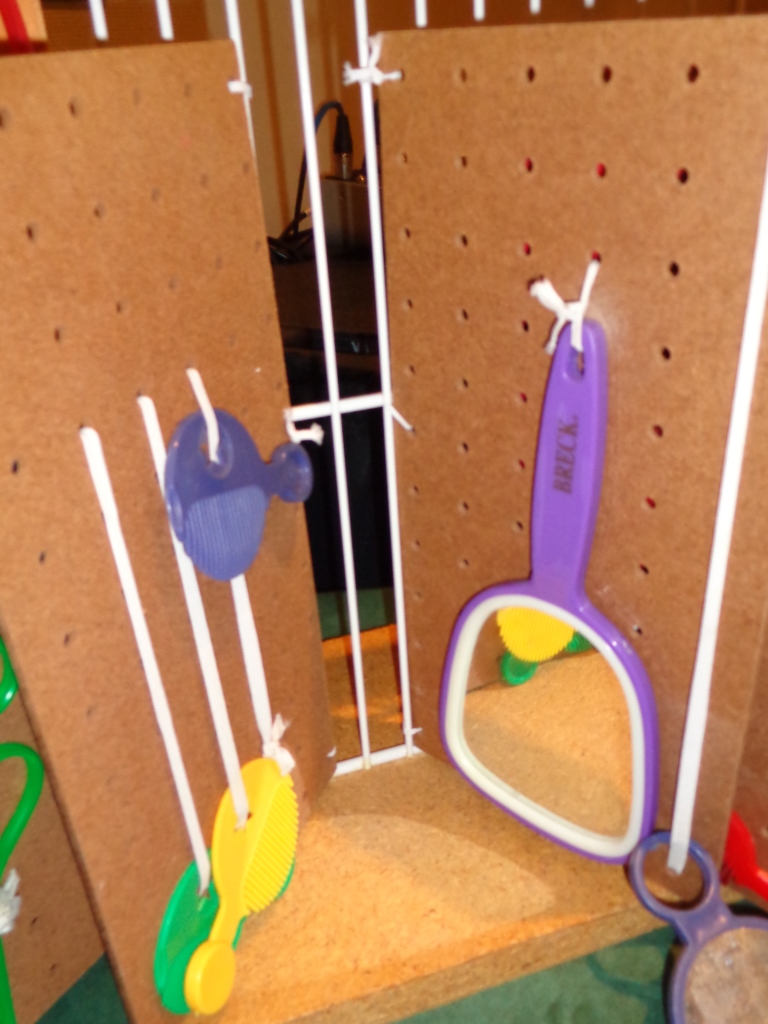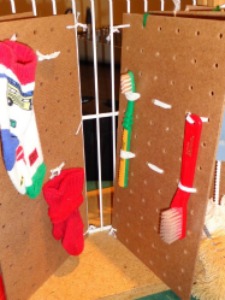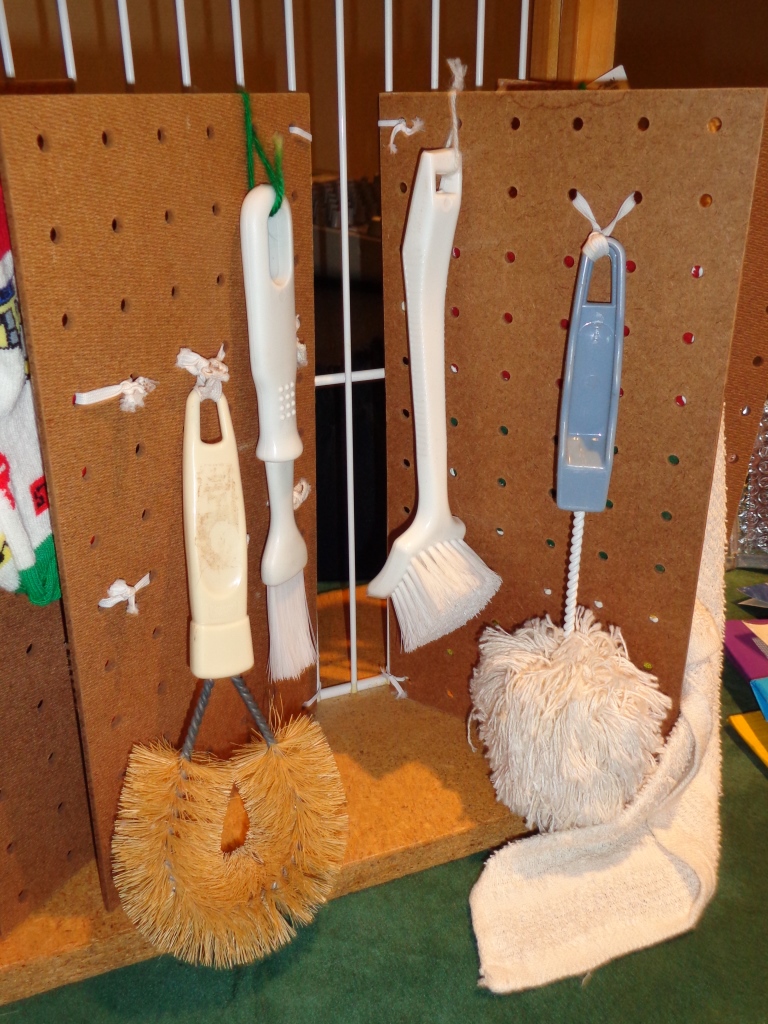Pegboard Books for Early Literacy
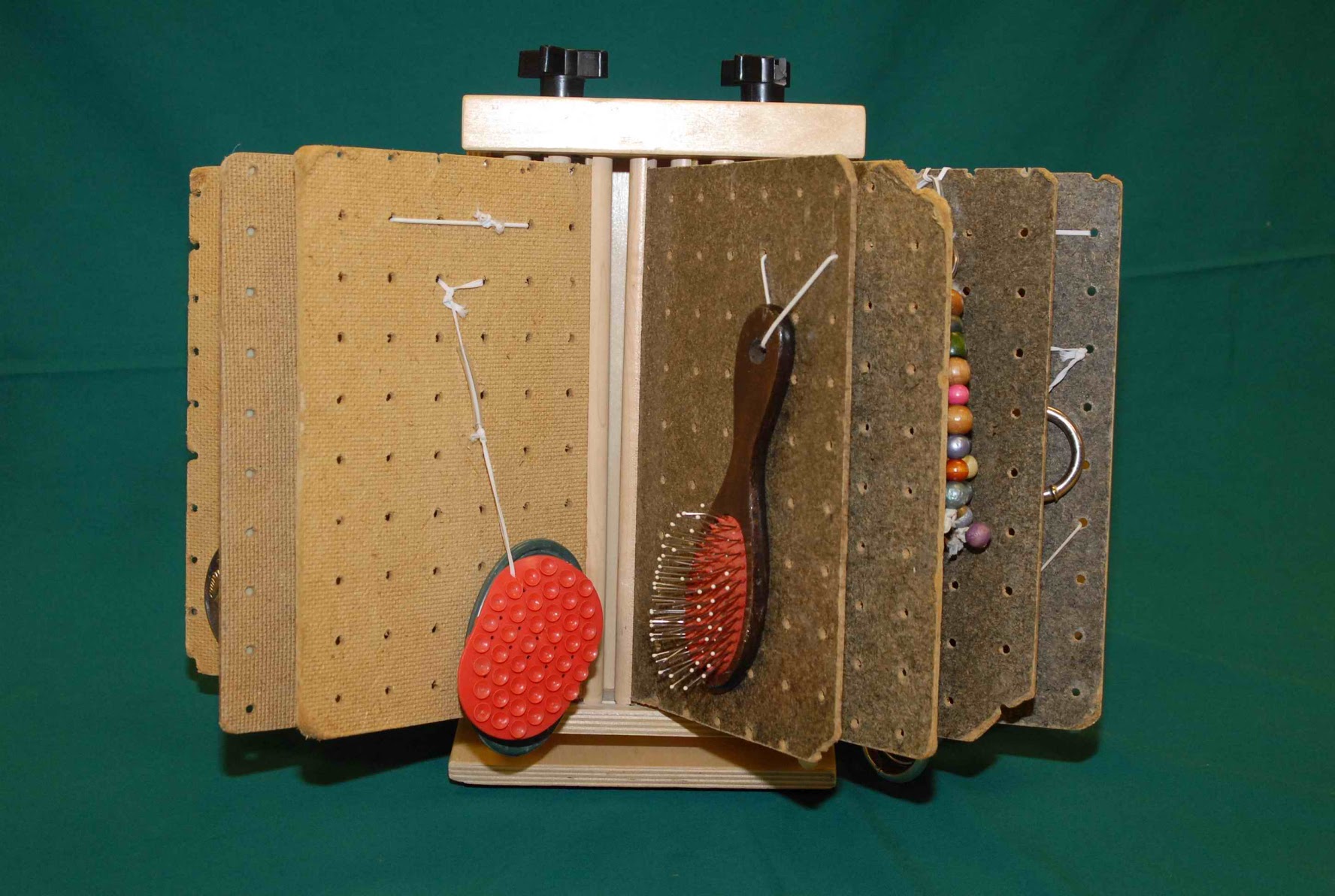 Pegboard books provide a way for young children who are blind or visually impaired, including those with multiple disabilities, to begin to explore books. Based on the work of Dr. Lilli Nielsen and her Active Learning approach, this format uses real objects attached to pieces of pegboard. The common household materials that are selected have varied and interesting tactile properties, which encourage exploration.
Pegboard books provide a way for young children who are blind or visually impaired, including those with multiple disabilities, to begin to explore books. Based on the work of Dr. Lilli Nielsen and her Active Learning approach, this format uses real objects attached to pieces of pegboard. The common household materials that are selected have varied and interesting tactile properties, which encourage exploration.
Books can be made to focus on topics such as regular caregiving activities, favorite things, specific areas and activities such as things in the kitchen or bathtime. They might also be made to share an experience like a trip to the beach, a walk outside, or a party. Don't forget books based on rhymes or songs. These objects become the first "symbols" for the child and are an important step in developing language and literacy skills. When the child can relate an object with a specific activity or experience the object becomes a representation for the entire memory. Object symbols become more and more abstract as the learner develops and can be paired with even more abstract representations like braille or print.
Sometimes the learner will be able to pick the things that go in the book if the adult observes closely what draws the learner's interest in an experience or activity. Some books, like the things in the kitchen, might be selected for their graspability, interesting properties, or relevance to the learner such as a familiar cup, spoon, and dish.
Pegboard Books allow the learner to develop important motor skills such as grasp and release, and moving arms, wrists and hands to turn and explore pages.
Materials:
Here is what you will need to make a Pegboard Book.
- pegboard
- frame to hold the book together (see Ronda Dally's Pegboard Book)
- hinges (if attaching to a frame) or large metal binder rings
- materials to construct a stand such as a shelving unit or something constructed from wood (see Diane Sheline's instructions for making a Pegboard Book for CVI)
- string, velcro, cable ties, or other way to secure the items to the book
- interesting tactile materials, such as mirrors, brushes, socks, and other textured items
Sample pages from Ronda Dally's Pegboard Book:
Building a Pegboard Book
- Cut the Pegboard into booksize sections (consider the size of the child hands and size of the objects) about 9" X 12". Make sure to sand the edges or bind them with duct tape.
- Add hinges if attaching to a wooden frame like Diane Sheline's Pegboard Book for CVI.
- Attach objects that relate the story sequence using plastic ties or short pieces of elastic to the pegboard sheet (front and backside if appropriate - children with CVI may need items to only be attached to one side of the book).
- Connect the pages together on the frame or with the large ring binder.
Diane Sheline's Pegboard Book for Children with CVI:
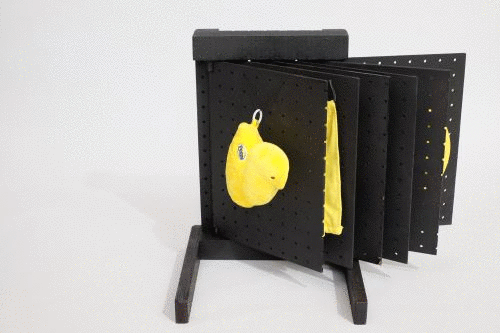
Sharing the Book
The Pegboard Book can be something the learner enjoys as an independent activity. It might also be an activity where the adult and learner share the book together. Think about children first discovering books. They explore the book with hands, mouths, and feet like any other object. Then mom or dad reads the book to them and they might help turn a page or simply flip pages back and forth. The adult often just names the object pictured or maybe adds some feature to describe the object like "the dog barked". So with a Pegboard Book you might have similar sharing. For example, "You ate with your spoon." If the book is based on an actual experience the child had you can talk about that. For example, "We rubbed lotion on your arms."
Developing Literacy Skills
Some of the pre-literacy skills that can be learned with books include:
- Orienting to the page (right side up versus upside down)
- Exploring a page (working towards learning top to bottom and left to right)
- Turning a page (working towards front to back, one page at a time)
- Recalling a sequence of events or steps (recalling content and relating to an experience)
- Learning about representation (building vocabulary and communication skills)
- Developing auditory attending skills (listening for vocabulary, sequence)
One of the nicest things about these Pegboard Books is the opportunity to cuddle up with your child and share regular reading time together. This might become a daily activity before bedtime. Sharing past memories of shared events, talking about activities that will happen in the future, or laughing together over a silly song or rhyme can be very enjoyable activities for the child and parent.
Learn more about Pegboard Books and Active Learning.
